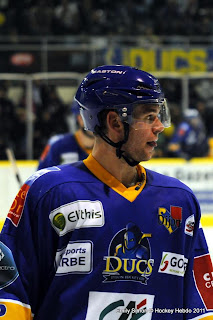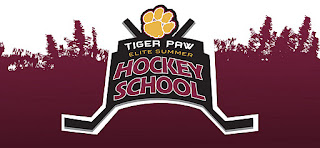STRENGTH TRAINING FOR YOUNG ATHLETES Scott Riewald, PhD, CSCS, NSCA-CPT and Keith Cinea, MS, CSCS, NSCA-CPT National Strength and Conditioning Association Education Department
Introduction
More and more, coaches and parents are asking the question, “When is it safe for my child to start strength training?” Several other questions, such as “What exercises should young athletes perform?” and “How often should they engage in strength training?” quickly follow. This article is designed to shed some light on these, and other, questions and dispel some common ‘myths’ surrounding youth strength training.
Let’s define some terms…So that we are all on the same page, it is important that we define some common terms that will be used throughout this article. The National Strength and Conditioning Association (NSCA) defines youth as a child who has not yet reached, or is going through, physical maturity. Recognize that not all children progress through puberty at the same time or at the same rate. Three athletes of the same chronological age (i.e. all are 12 years old) can differ by ± two years in biological age (differences with respect to maturity). Even though you have three twelve year olds, maturity wise they can range in age from 10-14.
Strength training is synonymous with the term ‘resistance training’ and is defined as a specialized form of conditioning that is used to increase one’s ability to produce or resist force. Strength training uses the principle of progressive overload to force the body (muscles, bones, tendons, etc.) to adapt in order to be able to produce and/ or resist larger forces. Strength training is not power lifting nor is it bodybuilding or trying to lift the most weight you can. Strength training is a tool that can augment sport performance through improved strength and motor control.
Is youth strength training safe?
The risk of injury is probably the primary concern of any coach or parent who has a child beginning a strength training program. Any exercise or activity carries with it some risk of injury – even a child running in the backyard can suffer an injury. It is unrealistic, therefore, to assume that injuries will never occur. However, this risk of injury can be minimized substantially by following a few simple guidelines. Specifically, appropriate training and competent instruction/ supervision are the two keys to minimizing all injuries.
Both the NSCA and the American Academy of Pediatrics state that youth strength training can be safe and effective if: •A competent coach who is skilled in program design supervises every strength training session and, •Proper technique is taught and required.
Even with this information, several safety concerns still exist. Two of the most common concerns raised by parents and coaches, damage to growth plates and overuse/soft-tissue injuries, are addressed below.
Concern #1: Does strength training damage growth plates in bones? Most parents and coaches are hesitant to begin strength training with young athletes for fear of damaging the bones and possibly stunting growth. Almost everyone has heard a story of some child experiencing stunted growth after damaging a bone’s growth plate from lifting weights. This story could be considered an “urban legend” – a story that everyone has heard, but no one knows if it is in fact true.
Before going any further, let’s define the term growth plate. In children, all bone growth occurs at a region of cartilage near the ends of the bone. This region is weaker than ‘mature bone’ and may be at a greater risk for injury. If the growth plate is damaged there is a chance that growth in the bone will be stunted.
The fact is that no growth plate fractures have been documented in athletes who engage in a resistance training program that includes “an appropriately prescribed training regimen and competent instruction.” The risk of injury to the growth plates can be further minimized by not allowing the athletes to lift weight over their heads or perform maximum effort lifts (i.e. performing one repetition lifting as much weight as they can). A general rule of thumb when working with younger athletes is to have them only exercise with weights that they can lift six times or more. Growth plate injuries should be taken seriously because they can happen. However, with proper care, the risk can be virtually eliminated.
Concern #2: Do overuse injuries occur with strength training? The potential for repetitive use injuries to the soft tissue (muscle, tendons, ligaments) of the body is another concern for young athletes entering a strength training program. These types of injuries do occur. The majority (40-70 percent) of strength training related soft-tissue injuries are muscles strains with the lower back being the most frequently injured area. Again, these types of injuries can be minimized by following a few simple guidelines: •Teach the athletes proper technique for each exercise that is performed. •Supervise every strength training session. •Do not have the athletes train with maximal or near-maximal loads. •Avoid using resistive devices that are supposed to improve vertical jump height. These may contribute to injury of the lower back.
Does strength training work for young athletes?
Benefits of Youth Strength Training
• Improved strength and coordination. • Increased muscle endurance.
• Improved sport performance. • Increased bone density. • Improved heath. • Improved bone strength/ bone density. • Reduced risk for injury. • Improved self-image and self-confidence.
Yes, strength training can benefit young athletes. Some of these benefits are highlighted in the accompanying table. Most people believe that testosterone (a steroid produced naturally in the body that plays a role in increased muscle mass and, consequently, increased strength) is necessary to build strength. However, there are also other mechanisms that can produce strength gains. Since young athletes (and female athletes) do not produce large amounts of testosterone the mechanism behind the strength gains differs from what is seen in adults. Resistance training helps to improve motor control and strength by “teaching” muscles how to work together in a coordinated manner. Even within a muscle, strength training helps to synchronize the contraction of individual fibers which leads to improvements in strength without gaining any additional muscle mass. Therefore, do not expect a young athlete to develop much new muscle mass when they begin strength training, since testosterone and other hormones that are required for the building of new muscle mass is not present in large quantities.
Designing a Strength training Program Probably the best way to introduce athletes to the wonderful world of strength training is to have them perform ‘body-weight’ exercises. As you might guess, these exercises use the athlete’s own body weight as the resistance. These exercises can include: •Push ups, •Pull ups, •Sit ups (crunches, bicycles, etc), •Back extensions, •Body weight lunges or squats, •Step-ups, and •Dips.
The benefits of these exercises are several-fold. First, this type of exercise is inexpensive and easy to implement. Second, these exercises strengthen the core muscles of the body (the core is defined as the muscles surrounding the body’s center of mass – namely the abs, lower back, and hip musculature) that help to stabilize the body. It is important to develop a solid strength base in these muscles before progressing on to more advanced exercises.
The initial goal of any program should be to build some muscular endurance. Start out slowly, initially performing one set of 15 repetitions. As the athletes develop, strive to complete three sets of each exercise, each containing six-15 repetitions, three times a week as part of the regular program. As an athlete matures physically and emotionally, you can begin to introduce more complex exercises (multi-joint lifts, free weights, low intensity plyometric as examples) into the program. However, even the most basic multi-
joint exercise requires a solid strength base in the body’s core musculature to minimize the risk of injury. If strength training is a part of the overall training program, it is important to make it consistent – when strength training is stopped, detraining (a loss of strength and the strength associated benefits) will occur.
Questions to ask before starting a strength training program There are several questions you should ask yourself (or the strength coach if that is not you) before embarking on a strength training plan for your young athletes.
Is the athlete physically and emotionally mature enough to engage in a strength training program? As mentioned, you want to start young athletes on a program that centers on muscular endurance and building strength in the core muscles of the body. As an athlete matures, he or she can progress on to more complex exercises, such as multi-joint exercises or lifting free weights. Athletes need to show the maturity, both physical and mental, to advance to these more complex exercises. Keep in mind that athletes of the same ‘chronological age’ can differ by as much as ± two years physically or mentally. Also keep in mind that females mature as much as two years earlier than males.
If machines or equipment are being used, is it sized appropriately for a young athlete? Most equipment in strength and conditioning facility will be sized to meet the needs of an adult and not a young athlete. Make sure you can adjust any equipment to the size of the child. If you cannot, then do not perform the exercise until the child “grows into” the equipment. When the need arises for “size appropriate” equipment, dumbbells and most free weights can be used. Dumbbells and free weights allow you to 1) accommodate for differences in the size of the athletes and 2) eliminate the need for purchasing junior/ youth equipment.
Is the program going to be properly run and supervised? Proper supervision and teaching are essential to running a safe and injury-free strength training program. The NSCA recommends a 1:10 coach to athlete ratio for young athletes. Strength training is more than just throwing a bunch of exercises together; a program should be carefully tailored to the needs of the athlete and the sport.
NSCA’s Recommendations for Youth Strength training •All athletes should be taught proper exercise and spotting technique. Exercises should initially be taught with no load to allow proper technique to be learned. •All training sessions should be supervised by an experienced fitness professional. •Each child should be physically and emotionally prepared to participate in a strength training program. Also consider the athlete’s maturity level when introducing more advanced exercises. •Children should have realistic expectations/goals. •The exercise area should be safe and free from hazards.
•Every exercise session should be preceded by approximately five-10 minutes of a general warm-up, followed by several sport specific warm-up exercises performed at a light intensity. •Equipment should be properly sized for a child. •Begin lifting, preferably, with body weight exercises. Athletes can also engage in basic machine exercises if they use light loads that allow the athlete to complete 12-15 repetitions. •The program should progress to ultimately encourage athletes to perform one-three sets of the exercises on two-three non-consecutive days. Each set should consist of six-15 repetitions. •Never increase the load being lifted by more than five percent for upper body or 10 percent for lower body exercises. •Competition between children should be discouraged since this may lead to athletes performing maximum lifts. •Strength training should be stopped at any sign of injury and the child should be evaluated prior to re-entering the strength program. •Never force a child to participate in a resistance-training program. •Keep the program fun.
References
NSCA Quick Series Guide to Weight Training for Kids: A summary of The National Strength and Conditioning Association’s Youth Strength Summit. Savannah, GA. July 1999.
American Academy of Pediatrics Committee on Sports Medicine and Fitness, Policy Statement on Strength Training by children and adolescents. Pediatrics 107(6): 1470-72. June 2001.
Faigenbaum AD, WJ Kraemer, B Cahill, J Chandler, J Dziados, LD Elfrink, E Forman, M Gaudiose, L Michelli, M Nitka, and S Roberts. Youth resistance training: NSCA Position Statement Paper and Literature Review. Strength and Conditioning 18(6): 62-75. December 1996








































